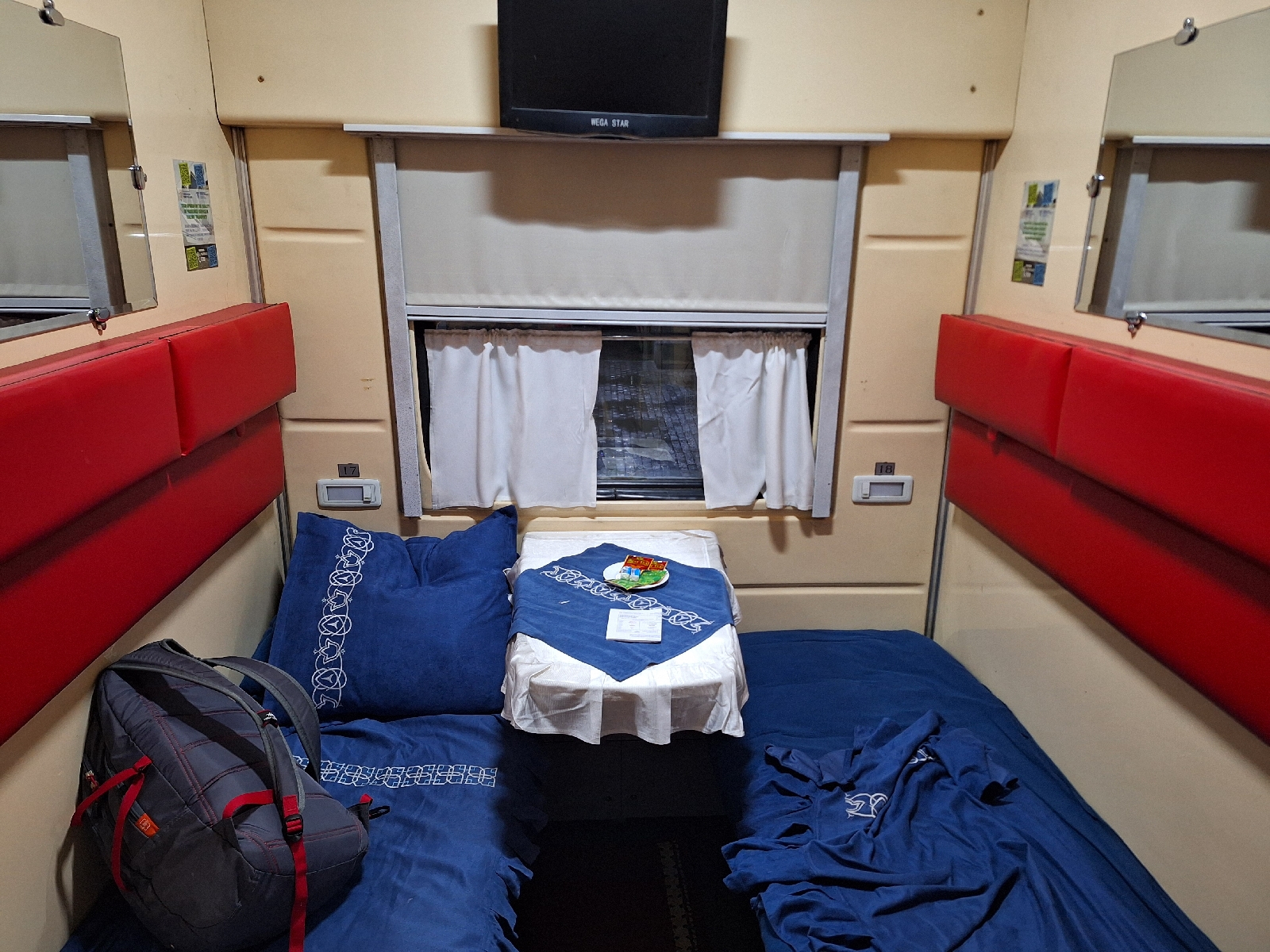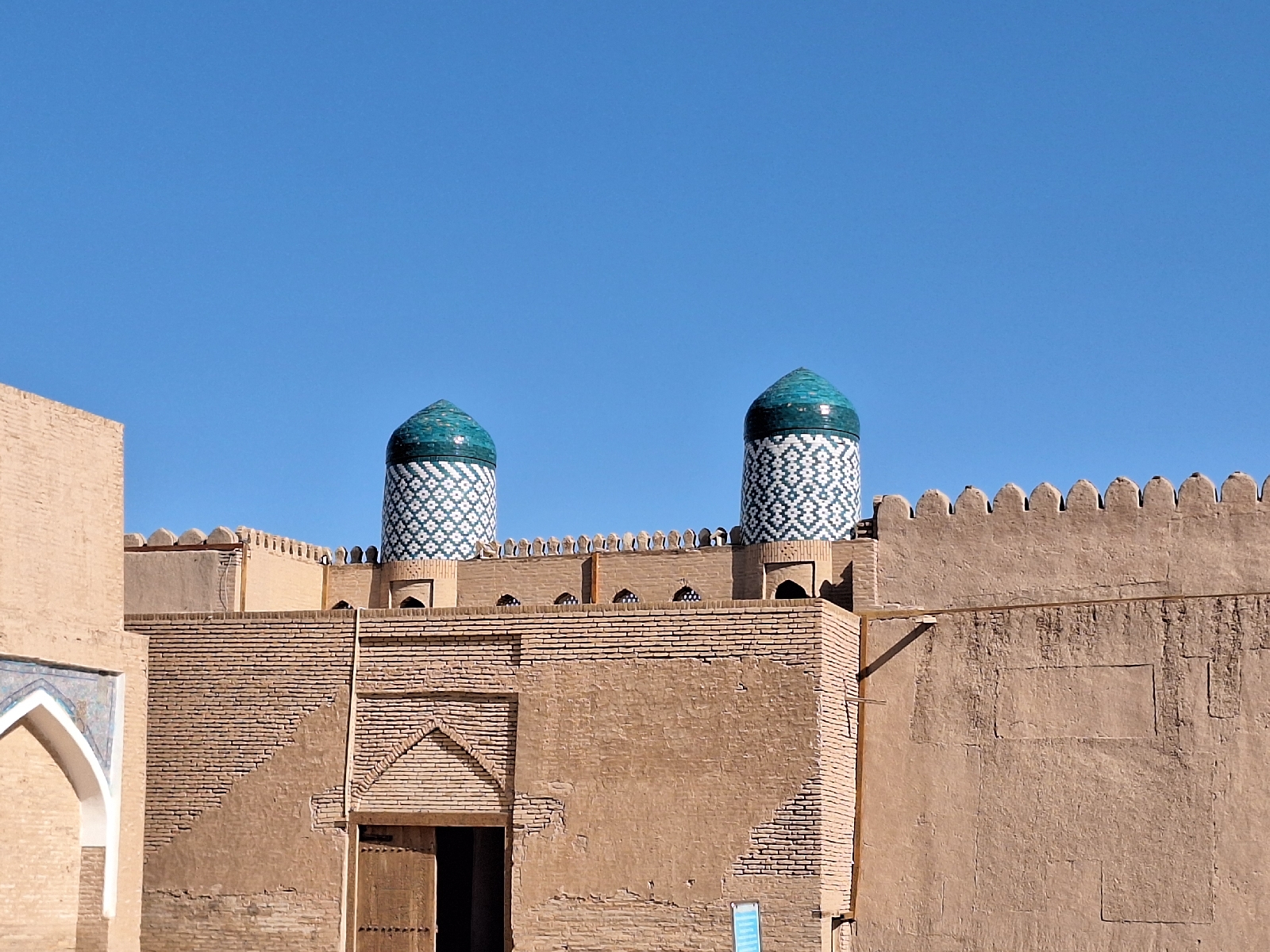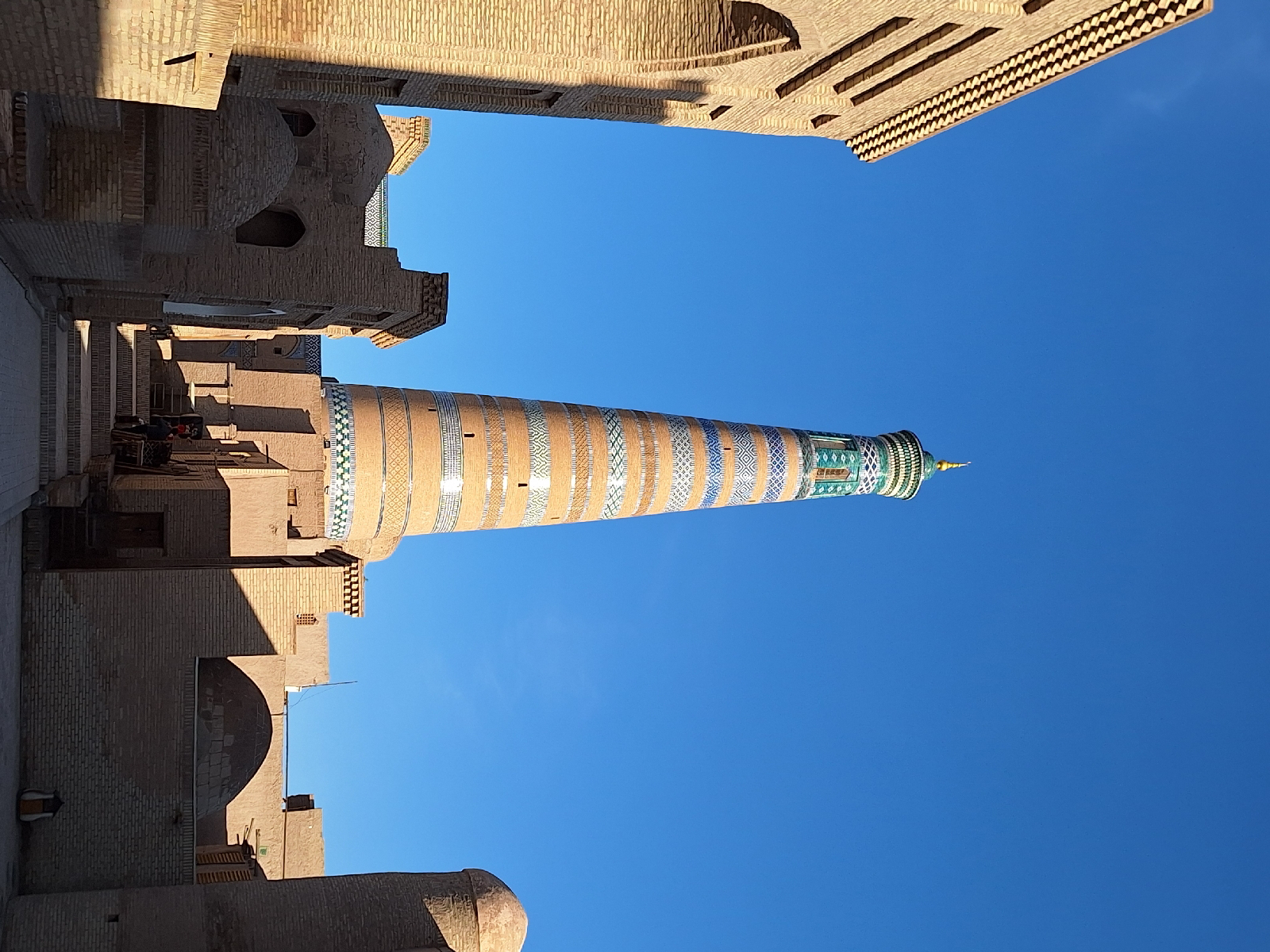Up very early for a 4:25 a.m. train heading west to Khiva (1). The train was about 1/2 hour late and the passengers joining the train here (mainly British and Italian travellers) waited in the cold rain. I settled into my first class sleeper compartment (2), labeled Пюкс (deluxe) on my ticket. Bed linens and some teabags awaited my arrival. Settling in, I fell asleep to the gentle swaying of the train as a steady rain mixed with sleet pelted the windows.
I awoke with the sun a little over two hours later to a landscape transformed. The train had left the rain behind, there was not a cloud in the sky, and we were surrounded by the Kyzylkum (red sands) Desert (3). Soon a man appeared selling warm savory cheese-filled pastries and coffee. The train click-clacked along through a vast sea of sand, with no humans or habitation visible for miles.
After 5 hours or so, suddenly there was some green and the train crossed the Amu Darya River (5). Forming the border with Turkmenistan, the river had been out of sight to the south for a while. The border jogs south of the river here, with a pocket of fertile territory, known as the Khorezm Oasis, belonging to Uzbekistan. Khiva is on this oasis, and the train followed the branch line south from Urgench.
While an ancient city, most of the current structures in Khiva date to the late 1800s, during the Khanate of Khiva period (4). The compact city was fairly quiet on this late winter's day (high 30s°F). Wandering about, I poked into the Khan's Palace (6), rich with blue and green mosaics. A yurt in a courtyard was the official place for business, reflecting the Khan's heritage on the Asian steppe.
At the fortress, I encountered some British travelers whom I had chatted with while awaiting the train in Bhukara. They said that the Islam Khoja minaret was open for climbing. The stairs were steep and narrow with no railing, so I often used my hands on the stairs. Arriving at the top 100 feet above the street (with a touch of vertigo), I enjoyed the fine views over the city and the plains stretching south into Turkmenistan.
(1) There are two trains a day; one at 3:52 a.m. and the next at 4:25 a.m. Similar time clustering appears on the schedule from Samarkand to Bhukara. I'm sure there is a reason to structure the schedule this way, but I do not know what it is.
(2) A splurge costing more than twice the price ($26) of a third class seat ($12).
(3) My phone still said we were in Romitan, that it was 34°F and snowing. Romitan is just west of Bhukara, and was presumably the last time the train was anywhere near a cell tower.
(4) Russia controlled the territory beginning in 1873, leaving the Khan in place as nominal ruler, much as the British had relied on local rulers in India. The Soviets ended the practice (a), establishing the short-lived Khorezm Soviet Socialist Republic, which was subsequently divided between the Uzbek and Turkmen S.S.R.s in 1924.
(a) The last Khan, Sayid Abdullah, was exiled to Ukraine. He found work as a guard at a mine, dying in the Ukrainian famine in 1933.
(5) Rising in the mountains near the Tajik/Chinese/Afghan border conjunction, the river flows west, petering out in the desert before reaching the Aral Sea due to irrigation diversions
(6) I was supposed to have purchased a ticket granting entrance to the walled city and the various buildings and museums within. Because I was staying inside the walled city, the hotel shuttle had circumvented the normal, pedestrian entrance to the city at which a ticket is purchased (b).
(b) This also explains why the driver went from the station (east of the city), then north, then west, then south to gain access to the vehicle entrance in the southeast corner of the city, actually rather close to the station.
The train arrives at Bukhara on a cold, rainy morning
Пюкс (deluxe) sleeper cabin
The samovar
Sunrise in the desert
Empty steppe
Good use for the samovar
Arrival at Khiva. The steam is from the samovar
The distinctive Kalta Minor Minaret
The Ark/Fortress of Khiva
Ruts in stone road from carts
Madrassa
Yurt exterior
Detail of the yurt door
The yurt where the Khan held court
Wall painting at the Khan's Palace
Islam Khoja minaret
View from the top of the minaret





























No comments:
Post a Comment